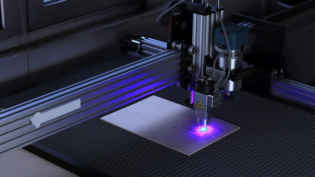
For a select group of early adopters, robots are making life safer and easier. They’ve emerged from labs walking, rolling and leaping on command. The term robot originated in 1921 from Czechoslovakian playwright Karel Capek’s play called (R.U.R) Rossum’s Universal Robots. It originated from the Czechoslovakian word for “forced labor.” The play left the public with a sentiment of distrust for robots, which perseveres to this day.
Today, highly advanced robots are emerging everywhere imaginable. While scientists sometimes debate over what qualifies as a robot, they are unified in their opinion that robots are intelligent machines that can perform tasks autonomously. In fact, many of today’s robots can sense and interact with their surroundings.
Technological advancements are making robots smarter and stronger. Innovative sensors, actuators and artificial intelligence (AI) technology has fueled the recent spread of these remarkably intelligent machines. Additionally, a combination of modern processing power and AI has increased the intelligence level of robots to new heights. In fact, the technology enables some highly advanced robots to feel, allowing them to process a range of sensations that vary from surface temperature to texture. Despite this, although robots are growing increasingly advanced, they must exhibit more self-sufficiency before they are truly useful.
Planet of the Robots?
Technology firms such as Amazon, Sony, LG and Google are working diligently toward developing innovations in the field of household robotics. Today’s household robots mostly perform limited tasks, such as dog walking, vacuuming and lawn mowing. This, however, will soon change.
Now, enterprises are investing heavily into developing more useful household robotic technologies. The race to build the next groundbreaking robotic technology is fierce, and the market should produce interesting household helpers within the next few years.
Today, people use robots for research, healthcare assistance and as an educational tool for children. Despite these beneficial uses, many people are more concerned with whether robots will one day take their job.
Analysts forecast that AI powered robots will take over approximately 7 million jobs by the year 2037. However, the efficiency made possible by robots will generate 7.2 million jobs, according to a report published by Price Waterhouse Cooper (PwC).
The business consulting firm forecasts that job openings in fields such as nursing and healthcare, hospitality, as well as science and technology, will expand, while work in manufacturing, transportation, storage and public administration will succumb to the purview of robots. These changes will produce many opportunities for people around the world.
Looking Ahead in the Robotics Field
Many movies have depicted versions of a robotic future. A few of these visions have come to reality in the form of the Mercedes-Benz semi-autonomous Driver Pilot system and Uber’s planned self-driving vehicles. Still, only 10-percent of American enterprises that can benefit from robot labor leverage the technology.
Most enterprises and organizations aren’t compelled to invest in technology simply for the sake of streamlining operations because it exhausts valuable time and resources. Consequently, low skill and low pay industries are not incentivized to invest in robots when human labor costs considerably less upfront. For the time being, most organizational leaders only consider an investment in robotics technology if it produces a considerable profit or can potentially save lives.
What Happens When Robots Try to Heal?
As early as 2012, research showed that robotic technology could possibly deliver several therapeutic advantages in helping autistic children. Since then, researchers have developed robotic technology that helps autistic children better understand emotions, and the technology has—as predicted—proved beneficial as a therapeutic resource. Additionally, research has shown that while therapists can gauge a child’s state of mind 55-percent of the time, advanced therapeutic robots can successfully gauge children’s reactions 60-percent of the time.
Therapeutic robots can mimic human walking, talking and facial expressions. For effective verbal interaction with the children, the robots must understand the context of conversation. To make this possible, researchers have developed machine learning technology that gauges the interest and attention level of children participating in sessions.
Autistic children who participated in a robot assisted therapy study responded well. Initially, the robots intimidated the children, but this changed over time, with the patients eventually developing an affection for their mechanical therapist. Apparently, stories of going out for ice cream were enough to produce laughter among participants, while helping to create a bond between the robot and the children.
While it’s impossible to predict the future of robotics, people can follow trends in the field and hope that the technology will lead to a more efficient and satisfying lifestyle. Companies have invested heavily in developing robotic technology, and there’s no doubt that it will make a considerable and positive impact on society.
1708 Views














